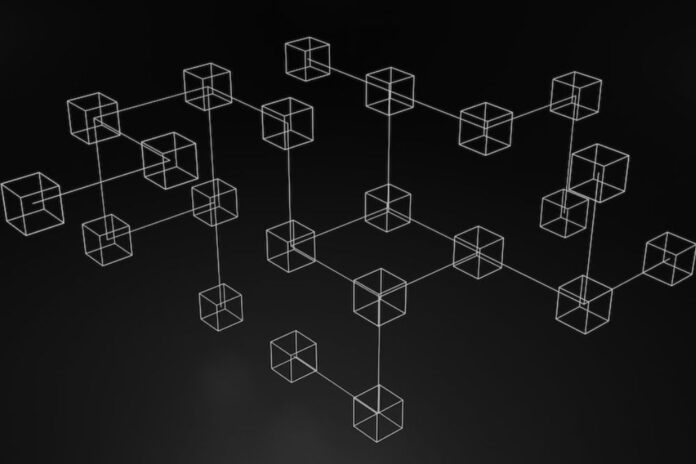The concept of blockchain was first presented as a research project in 1991 and was developed before its first widely used implementation, Bitcoin, which was introduced in 2009.
Since then, the number of cryptocurrencies, decentralized finance (DeFi) applications, non-fungible tokens (NFTs), and smart contracts has increased dramatically, greatly expanding the utility of blockchains.
Blockchain Is Blockchain?
A Blockchain is a decentralized, unchangeable ledger that makes it easier to keep track of assets and record transactions in a network of businesses.
A Blockchain is an information-recording technology that makes it difficult or impossible to alter, hack, or cheat the system.
Essentially, a Blockchain is a network of computer systems that duplicates and distributes a digital log of transactions.
Each blockchain transaction is logged in each participant’s ledger as a new block is added to the chain. Each block in the chain contains several transactions.
Distributed ledger technology (DLT) refers to a decentralized database controlled by numerous users.
A Blockchain is a type of DLT where transactions are recorded with an immutable cryptographic signature known as a hash.
Hash implies that it would be clear that it had been altered if they changed one block in one chain. The entire chain of blocks in all of the distributed versions of the chain would need to be changed if hackers sought to disrupt a blockchain system.
As new blocks are added to the chain, blockchains like those used by Bitcoin and Ethereum continue to grow, greatly enhancing the ledger’s security.
Types Of Blockchain Networks
Building a blockchain network can be done in several ways. They may be public, private, authorized, or constructed by a consortium.
Public Blockchain
A public blockchain, like the one used by Bitcoin, is one that anybody may join and use. Potential drawbacks include the need for computational power, a lack of privacy for transactions, and shoddy security. These are crucial factors to consider for blockchain use cases in businesses.
Private Blockchains
A decentralized peer-to-peer network, a private blockchain network, is similar to a public blockchain network.
A single organization, however, controls the network’s governance, executing a consensus procedure and managing the shared ledger. Depending on the use case, this can significantly increase participant confidence and trust.
Permissioned Blockchain Networks
Private blockchains are typically built by companies on permissioned networks. It’s crucial to remember that public blockchain networks can also have permissions. As a result, there are limitations on which transactions and who can participate in the network. To participate, participants must get an invitation or authorization.
Consortium Blockchains
Several groups might split the duties of maintaining a blockchain in a consortium blockchain. Who may submit transactions or access these previously chosen organizations to decide upon the data?
When all parties must have permission and share ownership of the blockchain, a consortium blockchain is the best option for business.
Essential Components Of A Blockchain
Blockchain technology, which has recently emerged in the 4.0 technology market, is bringing about significant changes in daily life across many socioeconomic sectors and is progressively developing as a new trend in the global technology and investment market. The component blockchain typically consists of 3 elements, which are:
Smart Contracts
A set of instructions known as an intelligent contract is saved on the blockchain and automatically carried out to speed up transactions. A smart contract can specify parameters for corporate bond transfers, stipulate how much must be paid for travel insurance, and much more.
Distributed Ledger Technology
The distributed ledger and its immutable record of transactions are available to all network users. Transactions are only recorded once with this shared ledger, preventing the duplication of effort present in conventional corporate networks.
Immutable Records
Blockchain technology uses the term “immutable record” to describe entire records.
Members cannot change it, so the data cannot be easily changed, ensuring very tight security.
Immutability makes it very challenging to make changes without cooperation. Once a transaction has been added to the shared ledger, no participant is permitted to alter or interfere with it.
You must add a new transaction to undo an error in a transaction record before both transactions are displayed.
What Blockchain Offers
Blockchain has a lot to offer in terms of navigating the transaction market better. It discourages sporadic business and slow transactions; we’ll see what kind of apparent benefits it delivers:
Better Proficiency
Time-consuming record reconciliations are eliminated using a distributed ledger shared among network participants.
Additionally, a set of instructions known as a smart contract can be saved on the blockchain and carried out automatically to speed up transactions.
MassiveTrust
Being a part of a members-only network and using blockchain allows you to be sure that the information you receive is correct and timely. Only network members you have explicitly given access to will have access to your private blockchain records.
Immense Security
Each network member must agree that the data is accurate and all confirmed transactions are immutable because they are permanently recorded. Nobody can remove a transaction, not even the system administrator.
Follow us on Twitter, Facebook, Telegram, and Google News


